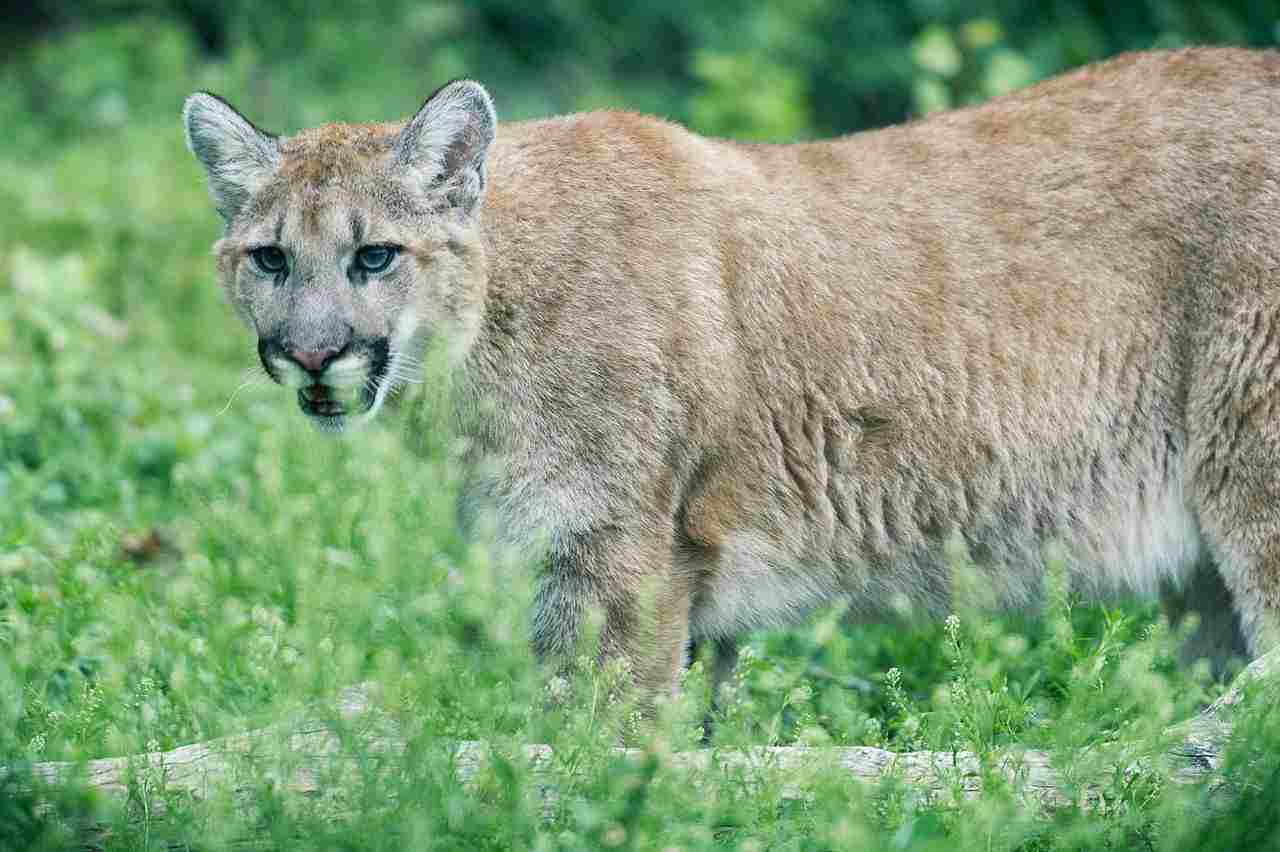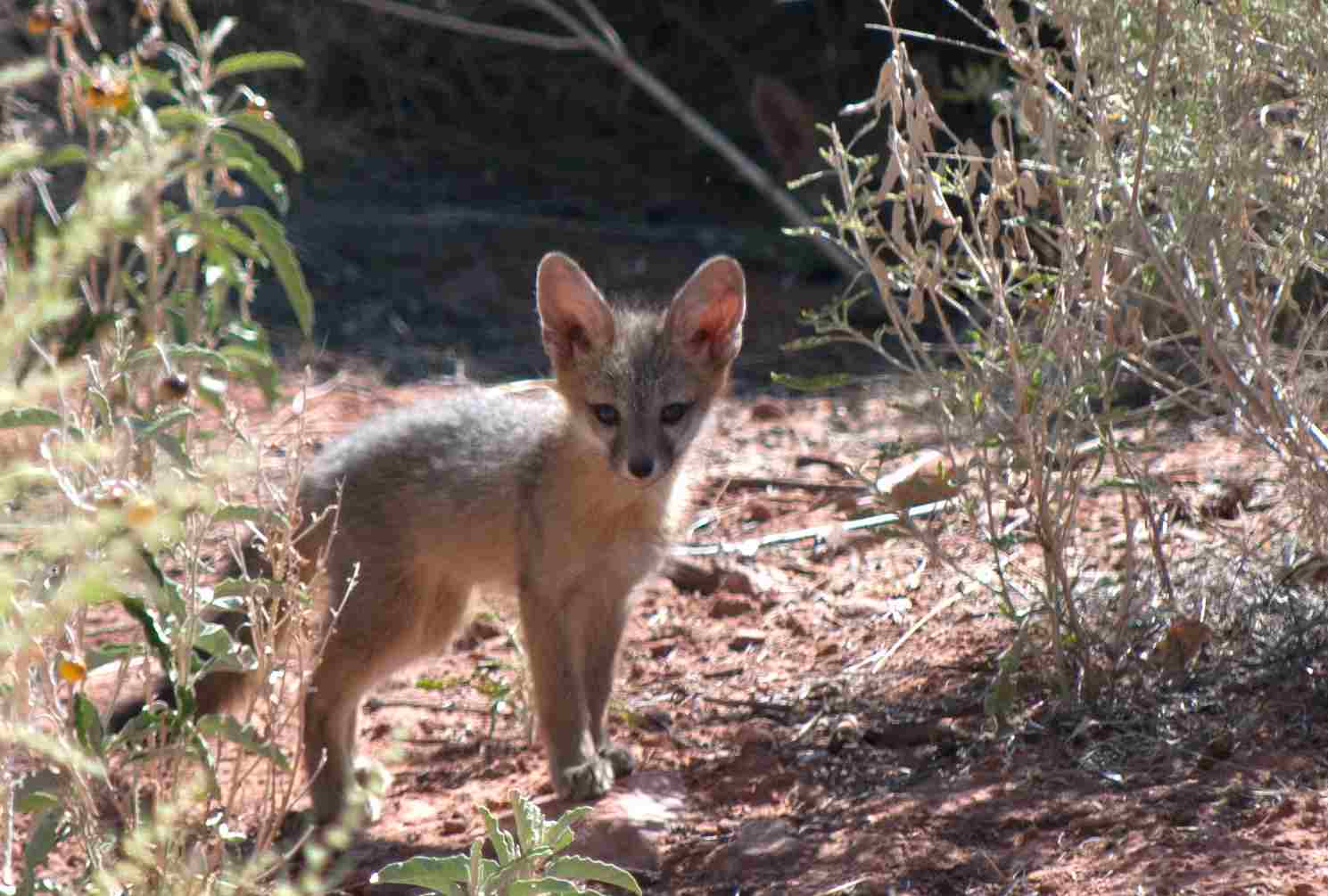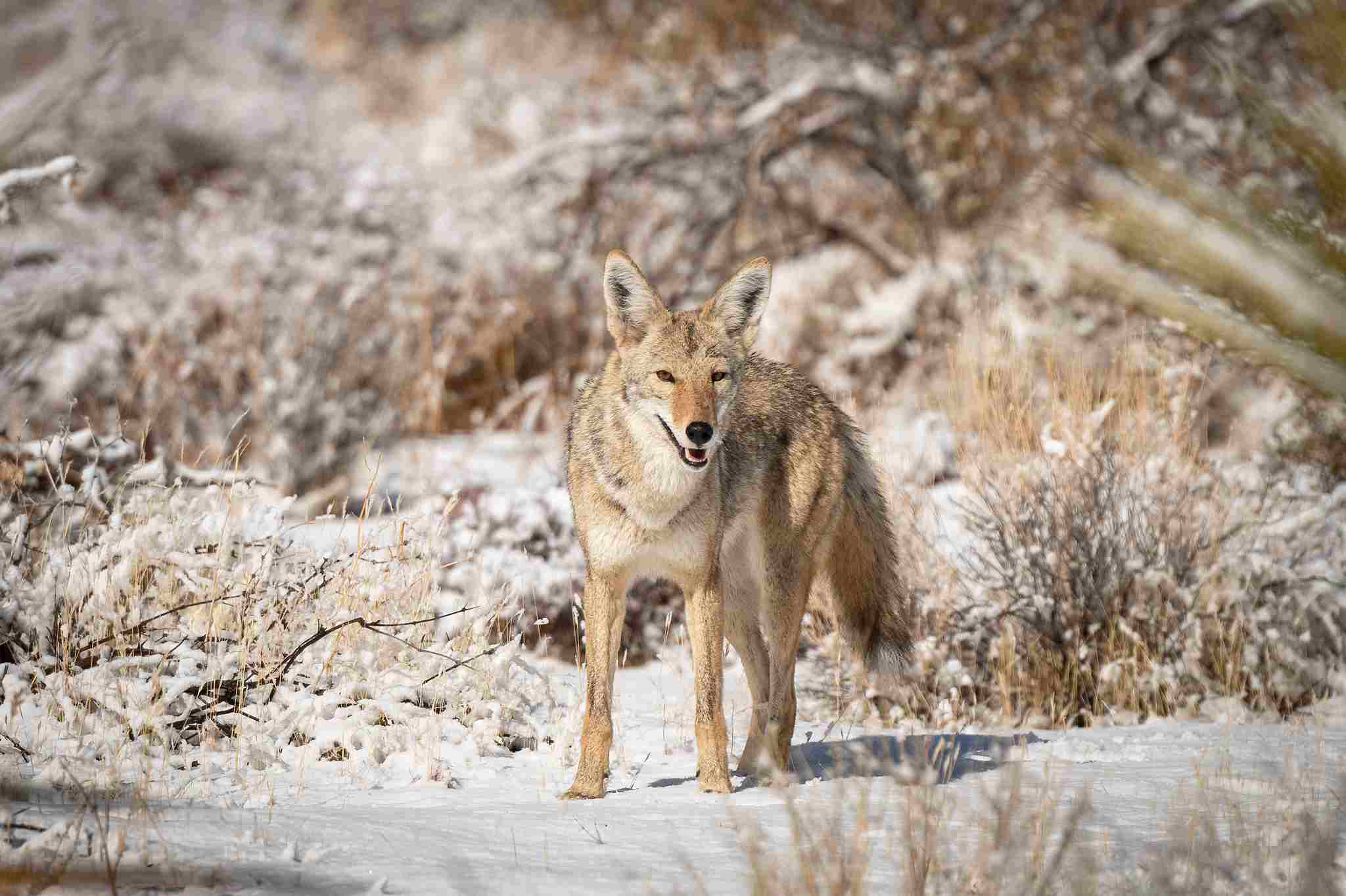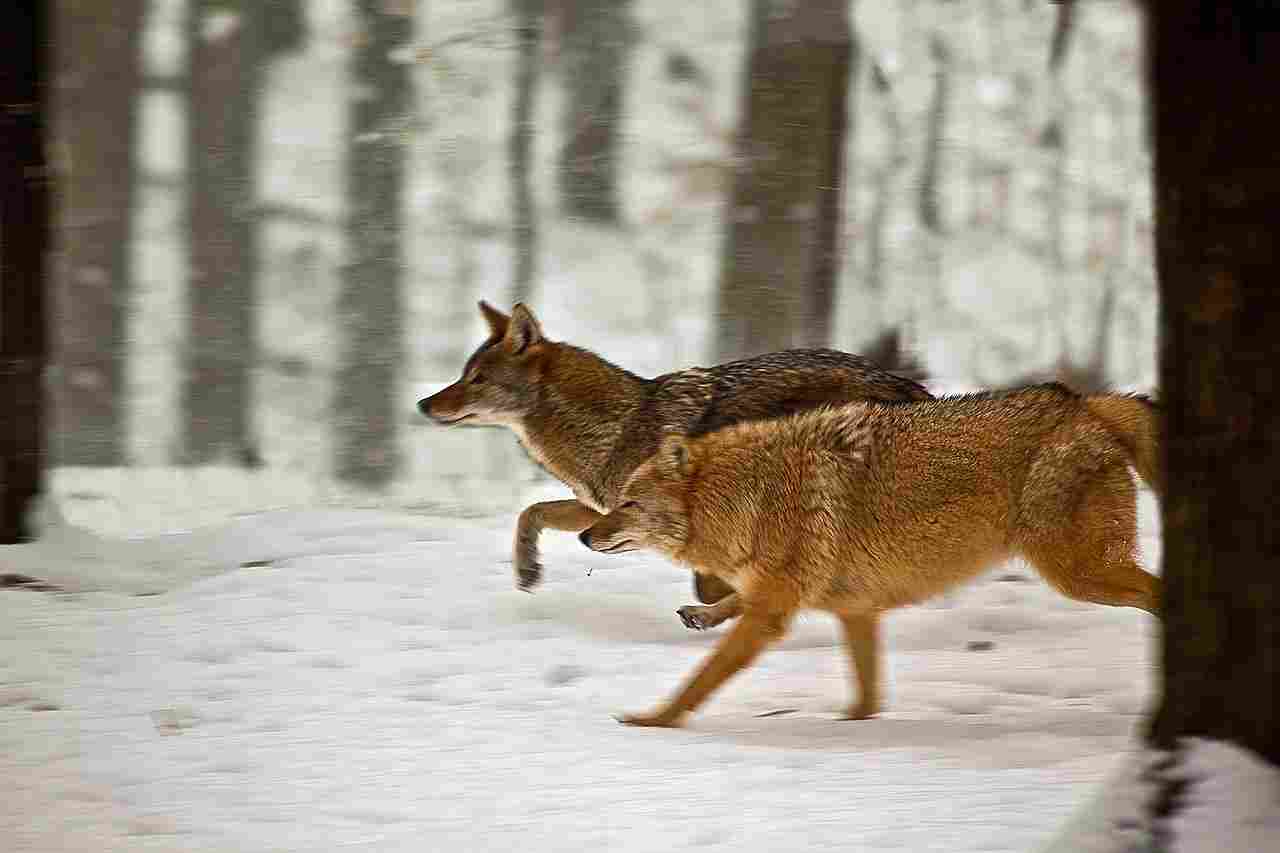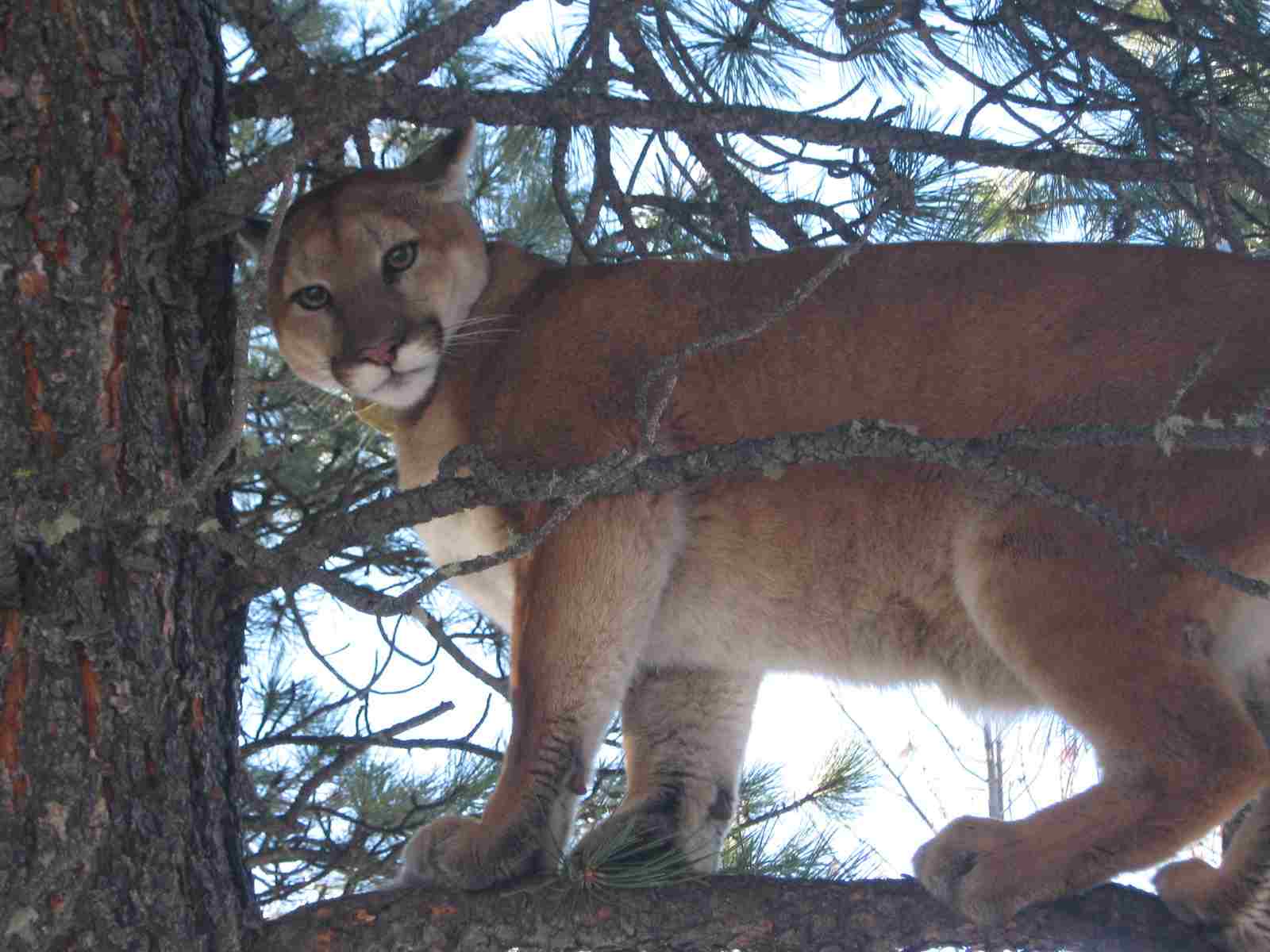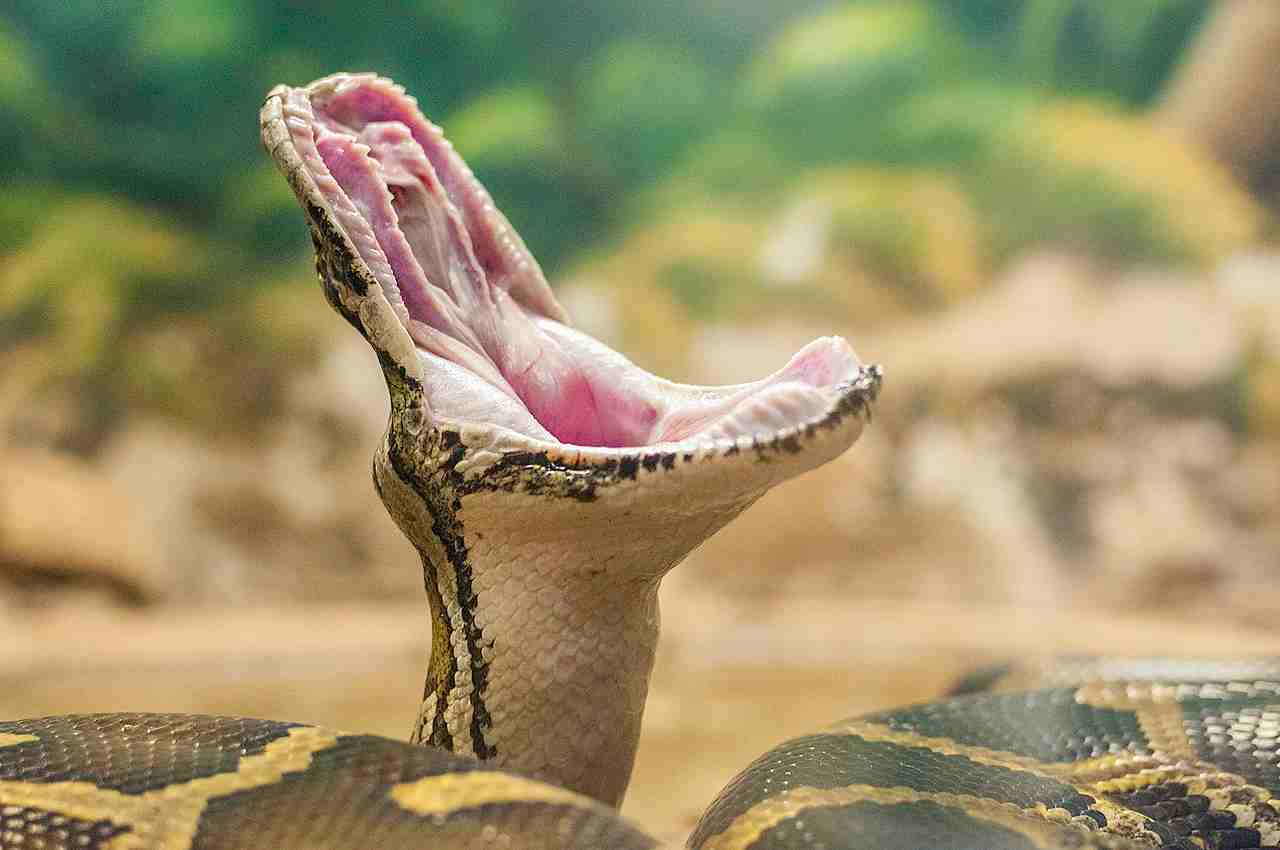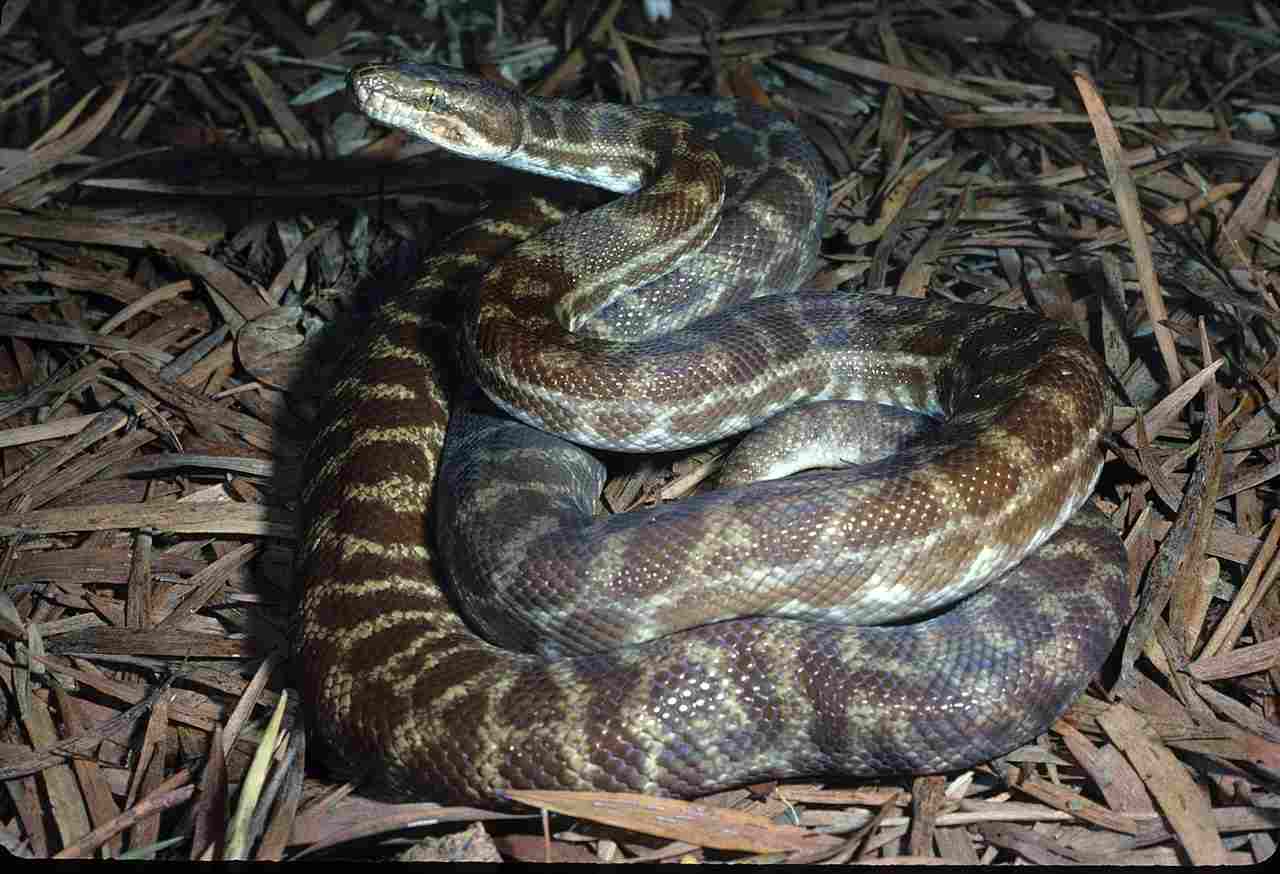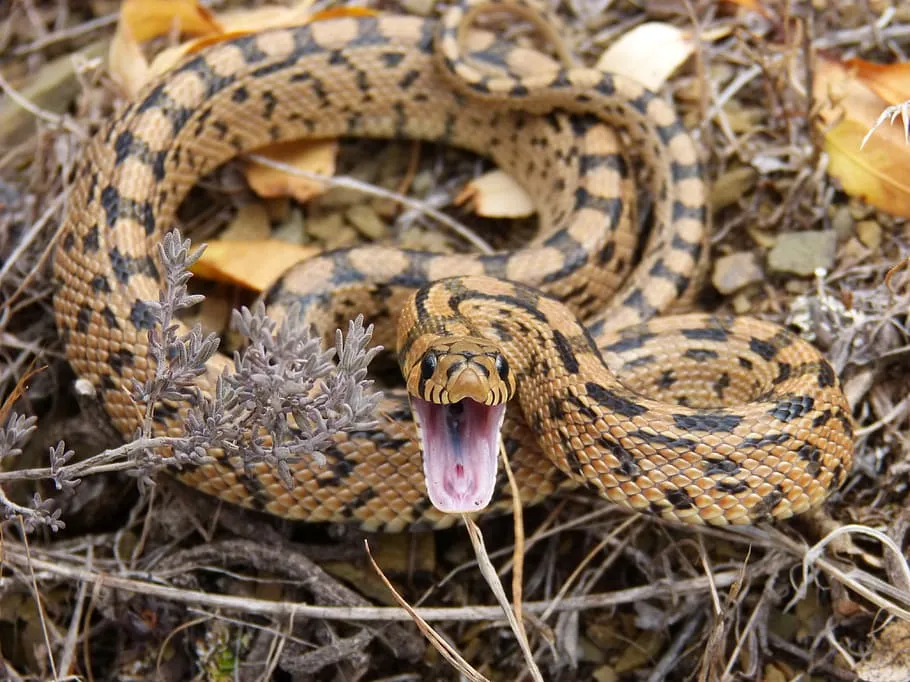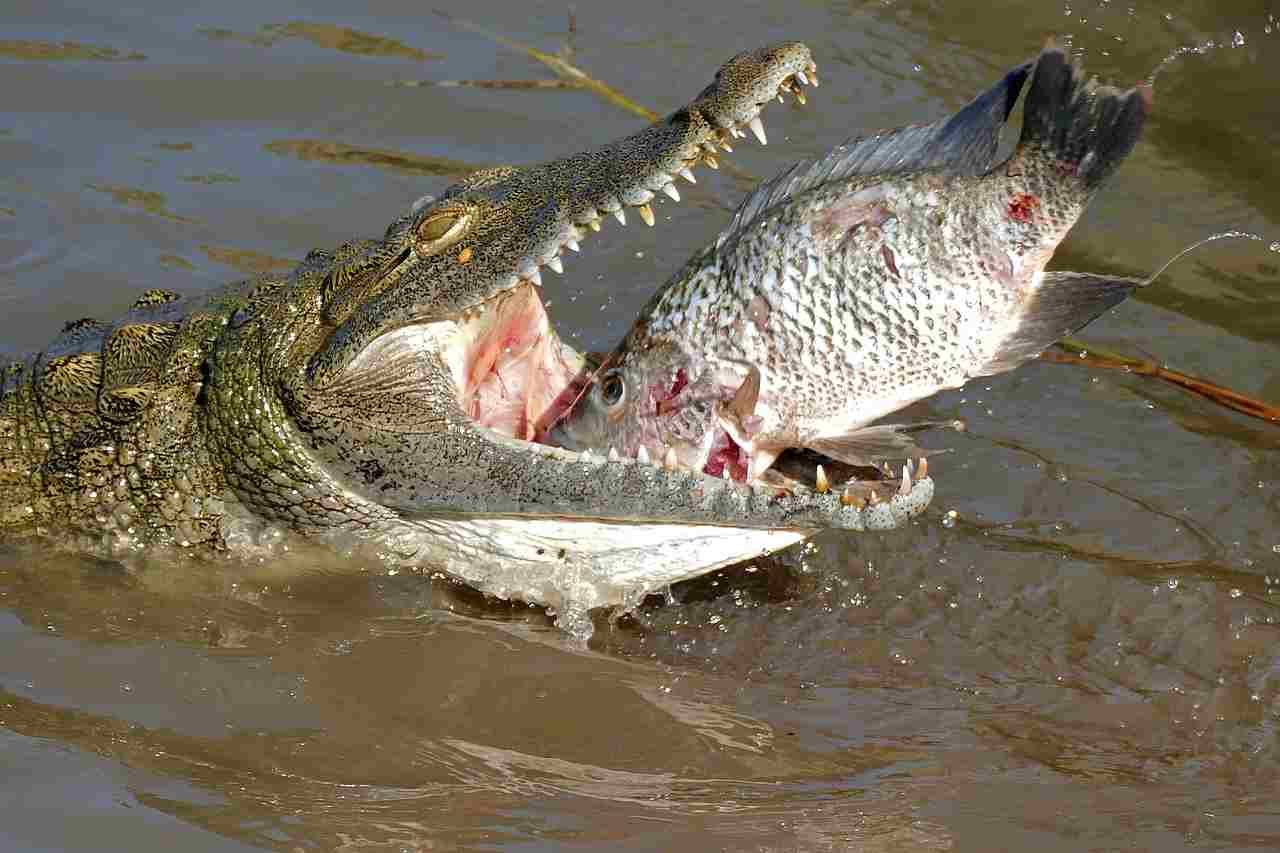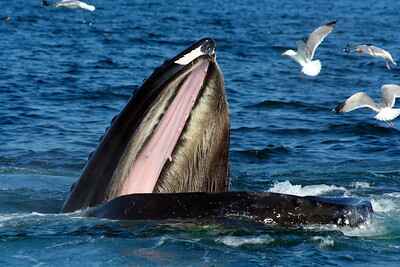9 Predators In Wisconsin And Their Characteristics
Examples of predators in Wisconsin include the Timber Wolf, Mountain Lion, Black Bear, Coyote, Timber Rattlesnake, Eastern Massasauga, Red Fox, Grey Fox, and, in rare cases, Crocodile. These predators range from large mammals to venomous snakes and play crucial roles in their ecosystems. While some, like the Timber Wolf and Black Bear, have made conservation comebacks, others, like the Eastern Massasauga, face ongoing threats. Understanding these predators and managing conflicts with humans are essential for maintaining Wisconsin’s biodiversity.
1. Timber Wolf
The Timber Wolf, also known as the Gray Wolf, is a majestic predator found in Wisconsin’s forests and wilderness areas. It is the largest member of the canine family and plays a crucial role in maintaining the balance of ecosystems. Timber Wolves are known for their complex social structures, often living in packs that consist of a breeding pair and their offspring. They are highly adaptable and can travel long distances in search of food, typically preying on deer, elk, and other large mammals. Their presence in Wisconsin is a success story of conservation, as they were once nearly eradicated from the state due to hunting and habitat loss.
Despite their comeback, Timber Wolves continue to face challenges in Wisconsin. Conflicts with humans often arise when wolves prey on livestock or pets, leading to tensions between conservationists and farmers. The state has implemented management plans to address these issues, emphasizing coexistence and compensation for losses due to wolf predation. Efforts are ongoing to maintain a stable wolf population while reducing conflicts with human activities. Ultimately, the Timber Wolf’s survival in Wisconsin depends on continued conservation efforts and public education to foster understanding and respect for this remarkable predator.
2. Mountain Lion
The Mountain Lion, also known as the Cougar or Puma, is a large predatory cat that historically roamed Wisconsin but is now a rare sight. These elusive creatures are solitary by nature and require vast territories to thrive. Their diet consists primarily of deer, but they also prey on smaller mammals and birds. While there have been occasional sightings and reports of Mountain Lions in Wisconsin, they are not considered to have established breeding populations in the state.
Despite their rarity, Mountain Lions generate significant public interest and concern, particularly around potential threats to livestock and humans. Authorities in Wisconsin work to monitor reports of sightings and investigate credible evidence, such as tracks or camera footage. The limited presence of these predators underscores the importance of preserving natural habitats and understanding the role that top predators play in the ecosystem.
3. Black Bear
The Black Bear is a common and iconic predator in Wisconsin, inhabiting the state’s northern forests. These large mammals are omnivores, feeding on a diverse diet that includes berries, nuts, insects, small mammals, and carrion. Black Bears are known for their ability to adapt to different environments, making them a resilient species. Although generally shy and avoiding human contact, they can become bold if food sources are readily available, leading to conflicts with humans, especially in areas where residential development encroaches on bear habitat.
Managing Black Bears in Wisconsin requires a balance between conservation and public safety. The state has regulations on bear hunting to control population size and reduce negative interactions with humans. Educational programs help residents learn how to minimize bear attractants, such as securing garbage and avoiding outdoor food storage. These efforts aim to promote coexistence while ensuring a stable Black Bear population in Wisconsin’s wilderness.
4. Coyote
Coyotes are adaptable and resilient predators found throughout Wisconsin. They have expanded their range due to their ability to thrive in various habitats, including forests, farmlands, and even urban areas. Coyotes are opportunistic feeders, consuming small mammals, birds, insects, fruits, and garbage. This adaptability allows them to coexist with humans, but it also leads to conflicts when they prey on pets or livestock.
Wisconsin’s approach to managing coyotes involves understanding their behavior and ecology to reduce conflicts. The state promotes education on how to protect pets and livestock from coyote predation, emphasizing coexistence and the importance of not feeding them. Coyotes play a valuable role in controlling rodent populations, and their presence contributes to the overall health of Wisconsin’s ecosystems. Despite their challenges, they are a vital part of the state’s wildlife community.
5. Timber Rattlesnake
The Timber Rattlesnake is one of Wisconsin’s native venomous snakes, primarily found in the state’s southwestern region. These snakes prefer rugged, wooded areas with ample rock outcrops, where they can find shelter and bask in the sun. Timber Rattlesnakes are generally shy and non-aggressive, preferring to avoid human contact. They prey on small mammals and birds, contributing to the control of rodent populations.
Wisconsin considers the Timber Rattlesnake a species of special concern due to habitat loss and human encroachment. Conservation efforts focus on protecting their natural habitats and educating the public about their ecological value. Although the presence of venomous snakes can cause fear, understanding their behavior and importance in the ecosystem is crucial for their continued survival in Wisconsin.
6. Eastern Massasauga
The Eastern Massasauga is another venomous snake found in Wisconsin, with a limited distribution in the state’s southeastern region. These snakes inhabit wetlands, marshes, and lowland forests, where they can find cover and prey on small mammals and amphibians. The Eastern Massasauga is typically shy and reclusive, rarely seen by humans. They use their venom to subdue prey and generally pose little threat to people if left undisturbed.
Conservation efforts for the Eastern Massasauga in Wisconsin focus on preserving wetland habitats and monitoring snake populations. Due to its limited range and specialized habitat requirements, the Eastern Massasauga is considered a species at risk. Public education is essential to reduce fear and promote coexistence with these venomous snakes, which play a significant role in maintaining the ecological balance in their habitats.
7. Red Fox
The Red Fox is a common predator in Wisconsin, found across the state in a variety of habitats, including forests, fields, and urban areas. Known for its striking red fur and bushy tail, the Red Fox is a highly adaptable predator that feeds on small mammals, birds, insects, and fruits. Its flexibility in diet and habitat preference has allowed it to thrive in human-altered landscapes, leading to frequent sightings even in suburban areas.
Wisconsin’s Red Fox population is stable, but management efforts focus on reducing conflicts with humans. These predators can become habituated to human presence, leading to issues with garbage scavenging and predation on pets. The state promotes education to reduce attractants and manage potential conflicts while recognizing the Red Fox’s valuable role in controlling rodent populations and maintaining ecosystem health.
8. Grey Fox
The Grey Fox is another predatory canid found in Wisconsin, though less common than the Red Fox. It is unique among canids for its ability to climb trees, a trait that helps it evade predators and find food. Grey Foxes inhabit wooded areas, where they hunt small mammals, birds, and insects. Their preference for dense forested habitats makes them less visible to humans, contributing to their elusive nature.
Despite their lower profile, Grey Foxes are an important part of Wisconsin’s wildlife community. Conservation efforts aim to preserve forest habitats and monitor populations to ensure their continued presence. Like other foxes, Grey Foxes play a role in controlling rodent populations and contribute to the biodiversity of their ecosystems. Public education helps reduce conflicts with humans and promotes understanding of the Grey Fox’s ecological significance.
9. Crocodile
Crocodiles are not native to Wisconsin, and their presence in the state would be due to illegal pet ownership or escapes from captivity. These large reptiles are typically found in tropical and subtropical regions, where they inhabit rivers, lakes, and swamps. In Wisconsin, sightings of crocodiles would be extremely rare and would likely result from individuals kept as exotic pets or those that have escaped from captivity.
The presence of crocodiles in Wisconsin poses significant risks to public safety and native ecosystems. Authorities take reports of crocodile sightings seriously, investigating and capturing these reptiles to prevent harm. The illegal ownership of exotic animals is a concern, and the state has regulations to prevent the introduction of non-native species. Public awareness and enforcement are key to ensuring Wisconsin’s ecosystems remain free from potentially dangerous exotic predators.
*Summary
-
Timber Wolf: Large predator in Wisconsin’s forests; social structure involves packs; conservation success story.
-
Mountain Lion: Rare and elusive; historically present; public interest due to potential livestock threats.
-
Black Bear: Common in northern forests; omnivorous; management balances conservation and safety.
-
Coyote: Adaptable predator found throughout Wisconsin; conflicts with humans; emphasis on education.
-
Timber Rattlesnake: Venomous snake in southwestern Wisconsin; conservation focus; non-aggressive.
-
Eastern Massasauga: Venomous snake in southeastern Wisconsin; wetland habitats; species at risk.
-
Red Fox: Common in various habitats; adaptable and opportunistic; focus on reducing conflicts.
-
Grey Fox: Less common; can climb trees; prefers dense forests; lower profile.
-
Crocodile: Not native to Wisconsin; presence due to illegal ownership or escapes; safety concerns.
| Predator | Description |
| Timber Wolf |
Large pack-based predator; conservation success in Wisconsin.
|
| Mountain Lion |
Rare, historically present; potential threats to livestock.
|
| Black Bear |
Common omnivore in northern forests; conservation and safety balance.
|
| Coyote |
Adaptable predator; conflicts with humans; focus on education.
|
| Timber Rattlesnake |
Venomous snake in southwestern Wisconsin; focus on conservation and education.
|
| Eastern Massasauga |
Venomous snake in southeastern Wisconsin; at-risk species; wetland habitats.
|
| Red Fox |
Common and adaptable; focus on reducing conflicts; controls rodent populations.
|
| Grey Fox |
Less common; tree-climbing ability; inhabits dense forests.
|
| Crocodile |
Not native; presence due to illegal ownership or escapes; public safety concerns.
|

